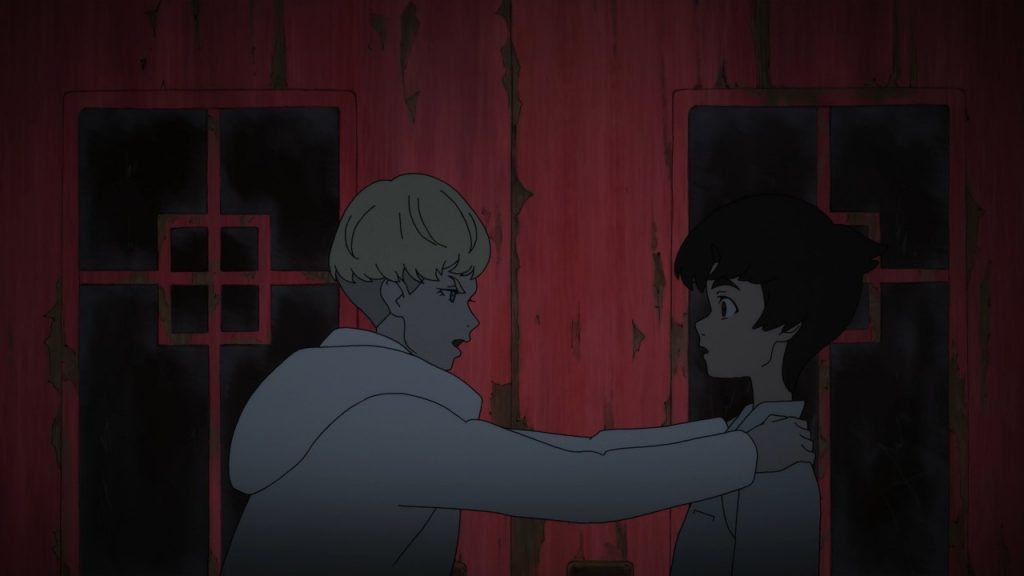“Devilman Crybaby” is Netflix’s newest attempt at original anime programming. In the first episode, the protagonist, Akira Fudo, is an unremarkable student-athlete. He soon gets involved with helping his friend, Ryo Asuka, to hunt down the demons Ryo has discovered hiding all over the world.
The two soon experience events that come to a head in a violent nightclub scene where a powerful demon named Amon possesses Akira. As a result, he becomes the devilman of the title; the story that unfolds over the next nine episodes is shockingly bloody and carnal, and (spoiler alert) it ultimately ends among the fragments of a ruined world with Satan mourning pathetically over a torso — although, to be fair, both Satan and the torso manage to get through the ordeal looking quite good.
The show is strange and provocative, especially for a service such as Netflix that, judging by Will Smith’s “Bright,” isn’t always expected to produce experimental content. So, it isn’t too surprising that the narrative in “Devilman Crybaby” sometimes feels jagged and disconnected, with the links that connect episodes in the season and scenes within the episodes often difficult to track.
Also, the dialogue is occasionally stilted and unnatural, with far too much exposition but far too little flow. The series also never seems quite sure whether its tone is serious, comic, both or neither.
With all of that out of the way, however, it’s difficult to deny that the show has absolutely stunning visuals. If you happen to have a subscription to Netflix, you might just find yourself binge-watching the show, in spite of its uneven plot.
Soaking in the saturated golden skies, the blood red interiors and the summery pastel settings might be just enough to keep you hooked on “Devilman Crybaby.” Unless, of course, you’re entirely repelled by the show’s strange juxtaposition of the beautiful, the gory and the weirdly erotic. All of that is precisely the blend that makes the show, quite literally, artistic.
One way to make sense of the odd aesthetic featured in “Devilman Crybaby” is to acknowledge how strongly it’s influenced by the style of the original 1972 “Devilman” manga by Go Nagai. It also draws inspiration from the many variations on the style worked out in adaptations earlier than Netflix’s version.
Another way to understand the art style is to place it in the larger stream of cultural products that shock audiences in an attempt to challenge their most comfortable boundaries. It’s the second approach that brings “Devilman Crybaby” into view as a type of 21st century commercial extension of subjects with deep roots in the art of 20th century surrealists such as Max Ernst and Salvador Dali. After all, both the anime and the painters are fascinated by dismemberment, hallucinatory experiences and the horrors squirming beneath the skin of civilization.

The surrealists’ interests had two main sources: the Dada movement and Sigmund Freud. Dadaism emerged in Europe from experiments with nonsensical art during and after the experiences of World War I. Its aim, which the later Surrealists picked up, was to create experiences that startle and unsettle. Sigmund Freud began writing at the end of the 19th century and made well-known claims about the disturbing stuff that people conceal to get through each day, which still make most people uneasy.
As with Freud, the Surrealists loved exploring the unconscious and all its irrational creations. Almost everyone who sees Dali’s famous painting titled “The Persistence of Memory” points out the barren landscape, the melting watches, the swarming ants and the blob on the ground — which has been described as everything from a whale to a fetus to the artist’s self-portrait.
To really see that the connections between Surrealist art and “Devilman Crybaby” aren’t arbitrary, take a moment and try to imagine a little blood spatter on Max Ernst’s “L’Ange du Foyer.” All of a sudden, Ernst’s work of fine art turns into what could easily be a screenshot of one of the show’s characters in the middle of a demonic transformation.
That said, I don’t mean to suggest that the art style portrayed in “Devilman Crybaby” doesn’t bring anything new to exploring the disturbing. For one thing, it’s allowed to throw in more blood and gore than what would probably have been acceptable in a respectable early 20th century art gallery.
For another, it brings to life the static images of surrealist paintings with animation and music. Netflix did both aspects of the anime admirably.
If you do get around to watching it, you’ll be struck by how much stranger everything happening seems when there’s low tempo techno music in the background encouraging you into an emotionally-flat trance. You’ll probably also remember how the demon-possessed humans run crouched over with their arms spinning as if they were pinwheels.
The image will stick in your mind especially well because their limbs look elastic enough to equal to the best of Dali’s melting clocks. Most of all the demons themselves are nightmarish and disfigured, which only gets worse when they start fusing with each other or, in an image the Surrealists and Freud would approve of, start emerging from the bodies of their hosts. “Devilman Crybaby”’ picks up the spirit of an artistic tradition that came before it and makes its themes dynamic.
For all its similarities to its Surrealist forebears, it’s worth noting that “Devilman Crybaby” has to stand on its own merits. One of its most distinctive strengths is that beneath all the scenes designed to shock and a plot that sometimes loses its way, it does have many moments of genuine humanity and warmth when the characters come alive and show an endearing tenderness.
In a way, it’s the moments of warmth that keep you going, even when the violence seems juvenile. Then again, that might just be one more way that it pursues the old Surrealist interest by putting things that clash side-by-side.


















I absolutely loved how ‘Devilman Crybaby’ pushes the boundaries of animation and storytelling! The surreal visuals and deep themes really resonate with current societal issues. It’s wild how it can be both beautiful and haunting at the same time. This series definitely stands out in Netflix’s lineup!
I absolutely loved how ‘Devilman Crybaby’ pushes the boundaries of animation with its unique visual style and deep themes. The surreal elements really enhance the storytelling and make it a memorable experience. It’s refreshing to see Netflix taking risks with such bold content!